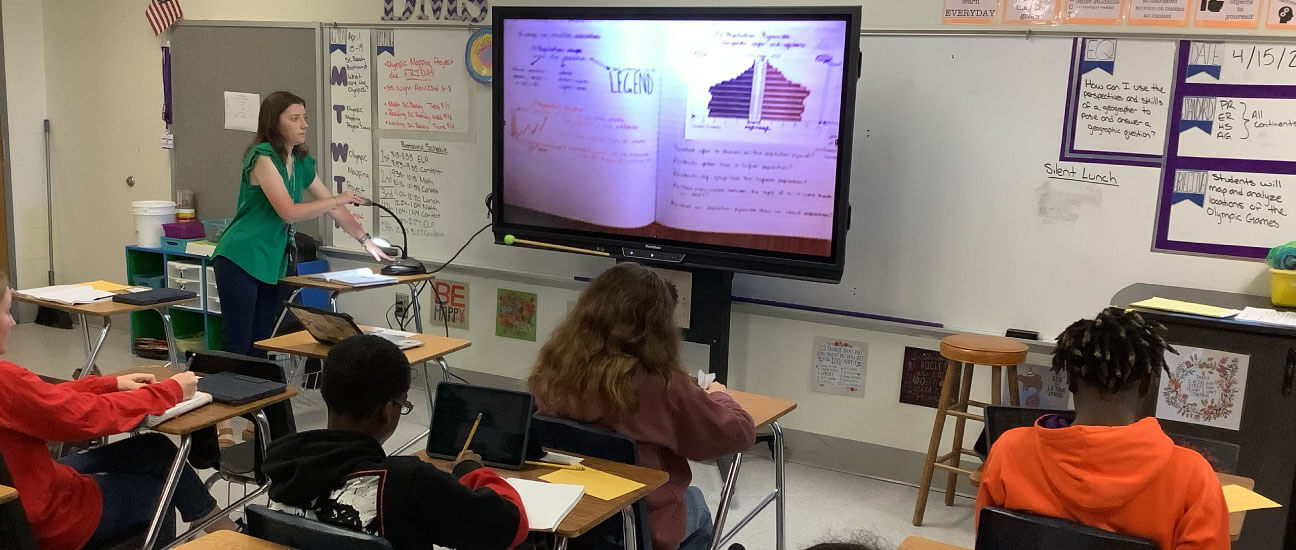Published on October 23rd, 2020
Forces that attract: How UC Berkeley chemistry professors made the transition to remote learning
8 minute read

Wake up. Log in. Cover the camera and mute the mic. For many first-year college students making the switch to online learning, it’s the new normal. And with a majority of colleges switching to fully remote classes during the pandemic, finding effective ways to reach today’s Freshman – perhaps the most internet-savvy audience one could hope for – is nevertheless a unique challenge garnering considerable attention across the country.
“It’s been said a typical college lecture is the process of information passing from the instructor’s notes to the student’s notes without going through the heads of either one of them. We’ve tried to avoid that by engaging the students.” – Mark Kubinec
For this story, the Promethean team and I interviewed Mark Kubinec, an Instructor in the College of Chemistry at The University of California – Berkeley. Originally, Kubinec planned on using his new interactive flat panel for in-person lectures in Pimentel Hall, one of Berkeley’s largest classrooms with a 500+ seating capacity. But with little more than a week’s notice, he and his colleagues found themselves scrambling for innovative ways to transfer their usually engaging and interactive lecture experience into an online, student-centered dialogue structured for digital natives.
Live! From Studio CHEM 1A
Before Berkeley and the UC system announced the switch to 100% online classes for the fall semester, Kubinec and his colleagues were already building a robust foundation to optimize asynchronous instruction. Because Freshman Chemistry is driven by chemical demonstrations and discussions, eLearning channels with visually engaging lecture and in-house lab content are vital and reused across the department. In addition, Kubinec’s courses feature archived live streams, studio-quality demonstrations, and textbook content directly in Berkeley’s learning management system to improve student feedback on homework and quizzes. “Berkeley is a research institution that relies on ingenuity and creativity for research which bleeds over into teaching,” said Kubinec.
At Berkeley and throughout California, the effort to make courses more resilient to interruption (including power outages) has led to a better student user-interface connecting a wide variety of asynchronous learning components. As daunting as it may seem to prep a condensed 8-week summer course with cutting-edge technology, Kubinec saw it as an opportunity to further digital curriculum initiatives. “We know the technology works, and students appreciate it. They gravitate towards it, so we don’t have any fear of assigning it,” added Kubinec.
The stage was set for Kubinec and his student instructors. From a spare bedroom converted to a make-shift studio, they chose to use the ActivPanel as the focal point for a blend of online technologies. Zoom, YouTube™ Live Stream, live chat, and an iClicker® Reef student-response app were used to deliver a unique online experience and tackle some of the more vexing issues of online education with a large audience.
Rise of the Zoom Roomies
What can Zoom do for you? To combat the inherent isolation of online learning, Kubinec and his colleagues used the breakout room to create a strong sense of community from the get-go. In a flipped-classroom model, students spend the entire live lecture watching the Chem 1A live stream lecture presented on Promethean ActivPanel in small breakouts with their ‘Zoom Roomies’. For most of his first-year students, summer Chem 1A was their first college and first remote course. But rather than be off-putting, the Zoom Room experience was more like sitting with their friends in a traditional classroom. And to complete the flipped-classroom experience, the teaching crew dropped into individual rooms throughout the lecture to guide discussions and unite the larger classroom.
Tossing the Chalk
Carving out time to integrate technology into pedagogical best practices is difficult, especially if you teach at an R1 institution like UC Berkeley. Technology should be practical, intuitive, and easy-to-use. Because many of its features are already built-in and ready out of the box, the ActivPanel represents a welcome change from overhead projectors and chalkboards. Instead of meticulously pacing a lecture with a tiny piece of chalk, the panel’s built-in Android™ OS is more like teaching from a tablet – and premium tools cue up visually impactful, interactive teaching applications with the swipe of a fingertip.
With Live Stream chat and iClicker® app responses, Kubinec further pushed the technological envelope to promote greater student engagement. “We pushed technology and especially the panel to the limits of what it could do. Students said [via evaluations] that it was amazing how you could show a video demonstration, pause it and annotate it to explain the concept,” said Kubinec.
Despite the short timeframe to integrate the panel’s features, Kubinec and the Chem 1A teaching staff are already impacting classes across the Chemistry Department. This fall, Chem 4 instructors are re-purposing video segments and slides directly from Kubinec’s Chem 1A summer lectures for live and asynchronous elements in their own course. With a future goal of more flipped-classrooms, Kubinec believes interactive flat panels will continue to spark innovation in the higher ed arena: “The idea that more instructors will see the technology and realize what you can do these days [with an interactive flat panel] is absolutely something that’s going to move forward.”
A Better Learning Environment for Tomorrow
You’re not alone! Many professors, educators, and administrators are in the process of structuring their new learning environment. To learn more about utilizing Promethean technology in your classroom, visit our Higher Education page.
Author: Brent Hawk taught high school Spanish for 6 years in Ohio, where he implemented a Comprehensible Input (CI) based curriculum to promote cultural fluency – which is part of the district’s 1:1 Chromebook initiative grant. He enjoys long-distance running, traveling, and watching Ohio State Buckeyes football.




